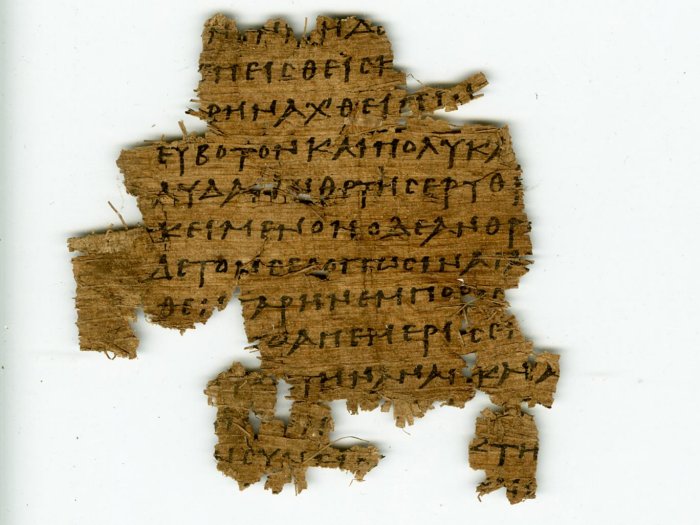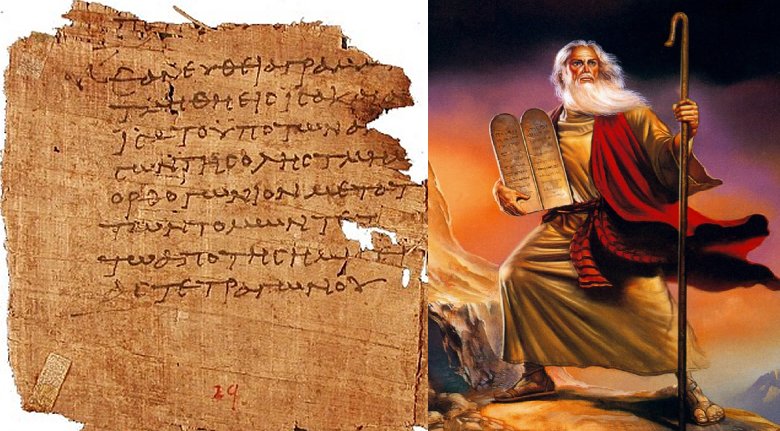MessageToEagle.com – In 1897, as many as 500,000 old documents were found by the Victorian archaeologists Bernard Grenfell and Arthur Hunt in the ancient city Oxyrhynchus, about 120 miles south of modern Cairo.
With help of volunteers from Oxford University thousands of these ancient papyrus texts have now been translated. One of the documents contains a long-lost play about Moses, a doctor’s note about a drowning and an ancient cure for a so-called ‘drunk headache’
The play was quoted by the church father Eusebius 400 years later, but so far no one found the original text. It was a tragedy first produced in 417BC.
“We didn’t know for certain that a text existed: Eusebius might have made it up or misremembered.
Now we have a real copy, a long speech by Moses, in iambic trimeters, telling the history of his life and how he was discovered as a baby in the bulrushes.

We can put some flesh and bones on a lost work of literature, one that was presumably performed long before Charlton Heston,” Dr Dirk Oddbink, of Oxford University, co-ordinating the Ancient Lives project said.
The discovered fragment of Ezekiel’s Exagoge, spoken by Moses reads:
Then the princess with her maidservants came down to bathe.
When she saw me, she took me up and recognised that I was a Hebrew.
My sister Mariam then ran up to her and spoke,
‘Shall I get a nursemaid for this child from the Hebrews?’ The princess urged her on.
Mariam went to fetch our mother who presently appeared and took me in her arms.
The princess said to her, ‘Woman, nurse this child and I shall pay your wages.’
She then named me Moses, because she had taken me from the watery river-bank.
Several of the old documents are from the 1st century BC to the seventh Century AD, when Egypt was occupied by the Greeks and Romans.
Another of the translated papyrus texts contains and ancient original cure for a hangover. Written in Greek, one of the medical recipes offers advice for how to tackle a ‘drunken headache’ – with the leaves of a shrub called Alexandrian chamaedaphne, or sometimes Alexandrian laurel.
The text recommends stringing the leaves of the evergreen plant, also called Ruscus racemosus, together and possibly wearing it around the neck.
See also:
The Ebers Papyrus – Most Famous Plant Medicine ‘Encyclopedia’ Of Ancient Egypt
Ancient Papyrus Reveals Millennia Old Astronomical Secret: The ‘Demon Star’ Algol Does Exist
The Egyptian Dream Book Reveals Ancient Predictions Of The Future
The Ancient Lives project is a great success that gives us a deeper understanding of the secrets of the papyri.
“By allowing public access to one of the largest unfinished archaeological projects in the world, we have been able to move beyond one scholar with a papyrus and a magnifying glass, to transcribe between 100,000 and 200,000 more texts – some of which had been partially eaten by worms, or used to wrap fish, or worse,” Dr Dirk Oddbink said.
MessageToEagle.com







